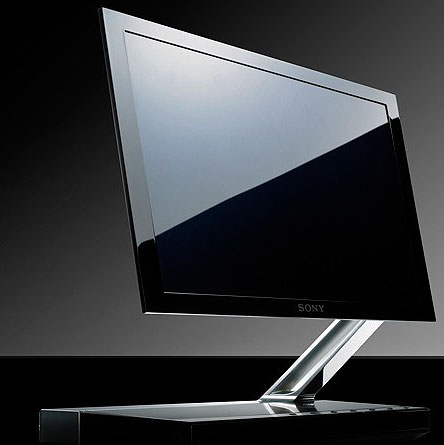 Sony has decided to delay the release of their second generation organic light emitting diode (OLED) television originally scheduled for release by the end of 2009. There are no confirmations on a new release date. The decision to delay stems from Sony’s lack of profitability in the current LCD market. Sony was the first to market with an OLED called the XEL-1 which was a mere 11 inches and carried a price tag of $2500 USD.
Sony has decided to delay the release of their second generation organic light emitting diode (OLED) television originally scheduled for release by the end of 2009. There are no confirmations on a new release date. The decision to delay stems from Sony’s lack of profitability in the current LCD market. Sony was the first to market with an OLED called the XEL-1 which was a mere 11 inches and carried a price tag of $2500 USD.
The primary marketing pitch for OLED is their depth, which currently can be as thin as 3mm (as is the case with the Sony XEL-1) though in theory they can be almost as thin as a piece of paper. The other less realized benefits of OLED are many. Production costs could be significantly less than LCD as OLEDs can be “printed” onto a suitable substrate similar to how an inkjet printer works. Black levels in LCDs have always been an issue because of the backlight required and even with LCDs moving to LED technology for their backlight they can’t come close to the black levels and contrast ratios OLED can produce. Each pixel on an OLED display produces its own light which lends to the ability to have true blacks and over a 1 million to 1 static contrast ratio (not to be confused with dynamic range which is often used by LCD manufacturers to represent their contrast ratio). Better color reproduction and viewing angles are also direct benefits from the way each pixel controls its own light output. Most importantly for gaming is the response time which is less than .01ms whereas the best LCD is around 2ms. Input lag has yet to be tested on these types of displays but if they don’t require any extra processing like LCDs typically do, then the input lag could be non-existent. With the possibility of zero input lag and a less than .01ms response time; people using these displays will have a clear advantage over somebody using an LCD as the person on the LCD will be several frames behind at best with what they see on their screen. OLED also uses 20-40% less power than similarly sized LCD displays. In short, OLED is the best of all the current display technologies and then some.
With Sony delaying their OLED release they have opened the door for their competitors into this emerging market. OLED with its low power consumption and other clear benefits could see a lot of interest in the mobile market. From cell phones to laptops, all of these devices could benefit from a display with vastly superior viewing angles and the lower power consumption directly correlates to increased battery life. Samsung is aiming for 2010 to see their OLED laptop displays being released while their 40 inch OLED television could still be a few years away. LG plans to release a 15 inch OLED television later this year for the Korean and overseas market. OLED is the technology of the future for all types of displays and the first company to get a good handle on it should benefit greatly.

